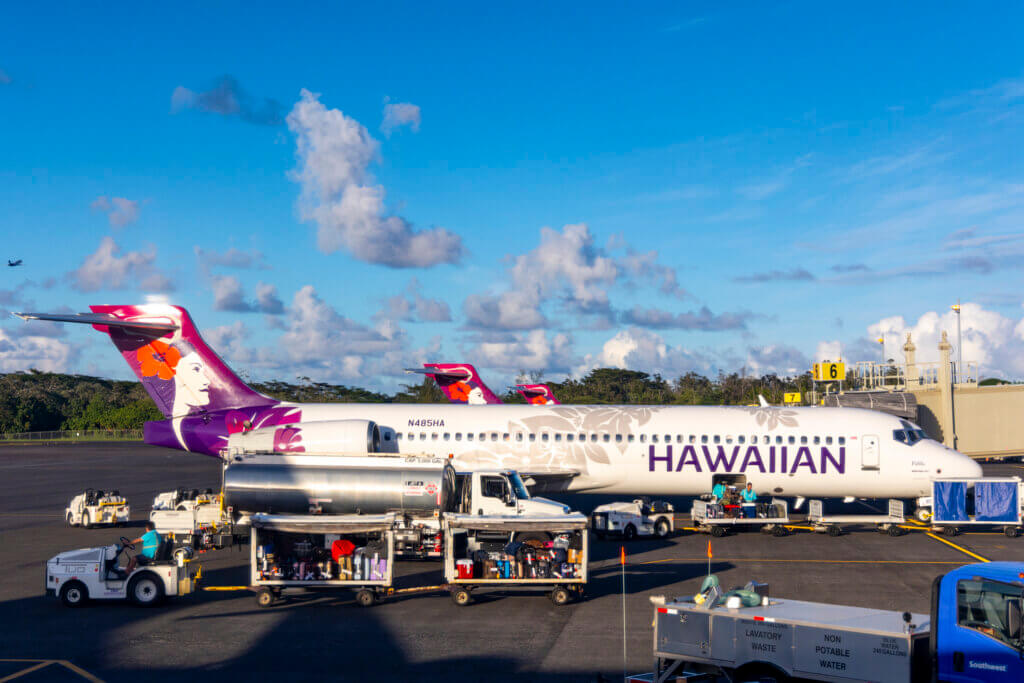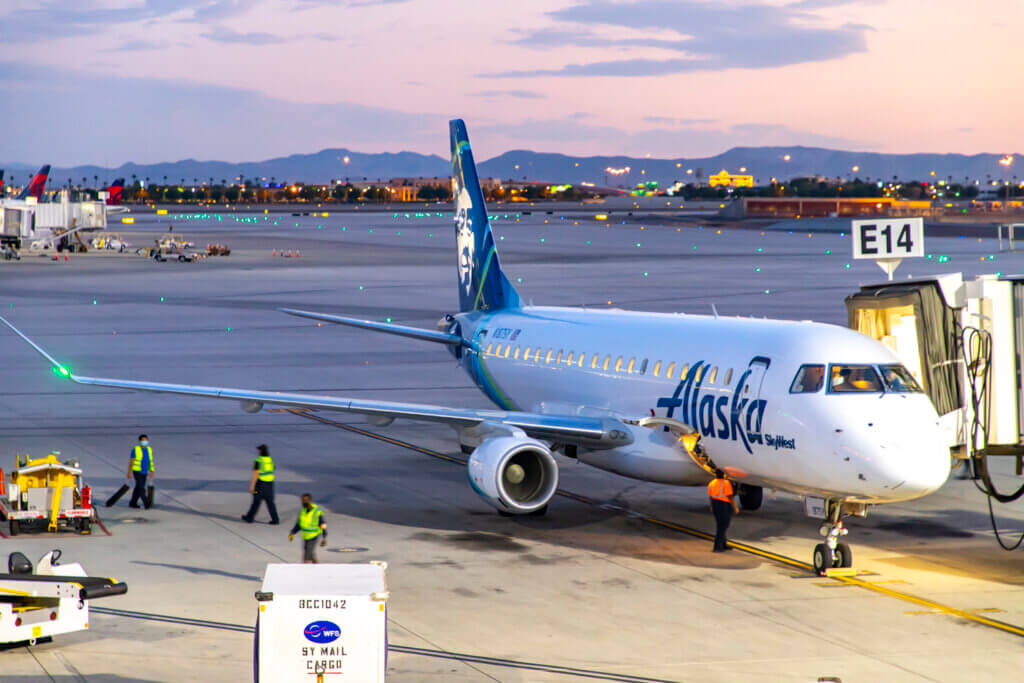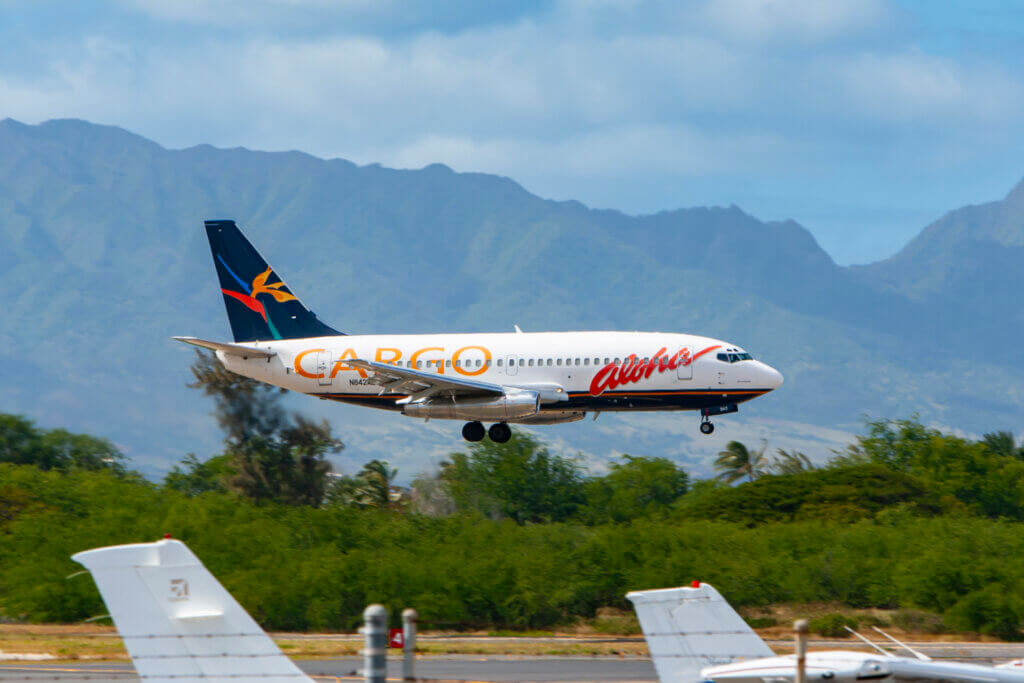In the investor materials announcing Alaska Air’s intent to acquire Hawaiian Air, Alaska Air notes that the 737 – the backbone of their mainline fleet – may be a suitable replacement for Hawaiian’s venerable Boeing 717s. Well, I’m here to say the Boeing 737 is not good for inter-island ops. Again.
Yep, I’m doing yet another 717 replacement post, this time in response to speculative statements made by Alaska Airlines. Of course, I’m referring to the comment that the Boeing 737 could replace the 717s that Hawaiian currently flies today. And while it certainly could, it’s far from ideal. How do I know this? History.
The Boeing 737 is Not Good for Inter-Island Ops
I know the first thing someone will ask when I say that the Boeing 737 is not good for inter-island ops is that Southwest is using Boeing 737 MAXs for its inter-island operations. Yes, this is true, but that ignores another critical facet of this argument – utilization. For its operations, Southwest cycles aircraft throughout its system. While its 737s are in the islands, they fly as little as one or two flights per day within the state, to as much as about a dozen. Typically, aircraft will spend up to an hour on the ground between flights.
On the other hand, Hawaiian flies its fleet of Boeing 717s exclusively within Hawaiʻi. While actual utilization can vary, Hawaiian typically operates between nine and twelve segments per day, every day, with its 717s. That’s a punishing amount of flight cycles, especially when you consider that the average stage length within Hawaiʻi is only 30 minutes. You literally get up to altitude and, in the case of HNL-OGG, immediately begin descending once again. Upon arrival, aircraft are turned and go right back at with, at most, roughly 40 minutes between flights. This type of operation doesn’t allow for the type of core cooling most modern turbines need, which can become incredibly problematic.

It’s also worth reminding that Alaska intends to keep Hawaiian its own brand. Cycling aircraft between Hawaiʻi and the continent won’t work too well under this arrangement, as you’d get a mix of liveries operating inter-island flights. While not out of the realm of possibility, I’d think that inter-island flights should be branded Hawaiian and only Hawaiian.
The Aloha Experience
Hawaii’s other hometown airline, Aloha Airlines, once ran an all-Boeing 737 operation. However, as AvGeeks will note, Aloha chose to stick with the old -200 variant with their loud Pratt & Whitney JT8D engines. Why? Well, capacity, for one. The -300 and -400 variants of the 737s were significantly larger than the -200, with a typical two-class configuration accommodating 126 and 147 passengers, respectively, compared to the -200’s 106. The other reason, however, was the engines.
You see, while loud and inefficient, the JT8Ds were robust turbines. They could take the punishing hot, salty, high-cycle operating style mandated by intra-Hawaiʻi flying and were relatively cheap to maintain. The same cannot be said of the CFM56 on the -300, -400, and the 737NGs or the CFM LEAP on the MAX.
CFM engines are sensitive to exhaust gas temperature (EGT). Of course, engines experience maximum EGT during take-off and high-thrust reverse-thruster operations upon landing. Typically, engines “recover” from these types of operations during low-power cruise or while parked at the gate. But with such short stage lengths and quick turns on most Hawaiʻi routes, engines used in inter-island service don’t get the opportunity to cool sufficiently, increasing wear and maintenance while decreasing reliability. This, along with capacity, is why Aloha stuck with the -200 until the very end, even though they operated CFM-equipped 737NGs for routes between Hawaiʻi and the West Coast.
And this is why the Boeing 737 is not good for inter-island ops today. Not only are the engines not up to the operational tempo demanded by intra-Hawaiʻi ops, but the smallest variant in Alaska’s fleet is the -700, which is configured to carry 124 passengers, but there are only 11 of them. The next smallest aircraft, the -800 and -8 MAX, both have seating for 159 passengers. That’s a huge increase over Hawaiian’s 128-seat 717s. Sure, you could make up for that by reducing frequency, but frequency is what differentiates Hawaiian from Southwest. That’s it.
By the way, in case you’re wondering, the PW1000 Geared Turbofan has extensive cooling requirements as well, which is why the A320neo family, A220, and Embraer E2 family aren’t suited for inter-island ops, either.
What Will Work?
If the Boeing 737 is not good for inter-island ops, then neither are the A320neo, A220, and E2. So, what aircraft would work? High-performance turboprops would be the ideal aircraft type. But turboprops get a bad rap for being slow and noisy. I certainly hate flying on ATRs – sorry. Plus, even large turboprops – such as the Q400 – don’t have the passenger or cargo capacity needed.
To me, the ideal aircraft for intra-Hawaiʻi ops remains the Embraer E-195. I’ve detailed why this is before, so I won’t go into the full details again. That said, the E195 has similar passenger and cargo capacities as the 717, weighs less, has a higher MTOW, better range, and superior efficiency. It also costs a fraction of what the A220s does. Plus, the E195 was built first and foremost as a short-haul aircraft for use on high-tempo routes.
As a passenger, I think (I’ve never been on one) I would prefer the A220. But from an operational standpoint, the E195 makes the most sense. It is the most similar to the 717 in all the critical characteristics while offering better efficiency and a (in my opinion) more comfortable cabin.

Hawaiian’s Planning
As you’ll recall, Hawaiian seemed to already draw the conclusion that the Boeing 737 is not good for inter-island ops. The type was noticeably absent from Hawaiian’s consideration list, which I found odd given their recent Boeing 787 purchase. Instead, that list included the Airbus A220, the A319, the A320, and the Embraer E195 E-2.
The Boeing 737 is Not Good for Inter-Island Ops, Final Thoughts
While I thought it odd for Hawaiian to leave it out, there’s no doubt in my mind that the Boeing 737 is not good for inter-island ops – at least, not under Hawaiian’s current schedule. Could that change? Perhaps. Maybe Alaska executives will find a way to compete with Southwest with fewer frequencies, thus making the 737 a viable option. But that’s something we’ll have to wait years to find out. At the very least, I’d hope that the A319neo and A320neo get axed from the list, especially given the constant parade of problems the PW1100Gs have been exhibiting. And while I’d love the A220 as a passenger, I still think the E195 is the most practical aircraft for the mission.
That said, it’ll be interesting to see how the A220 performs with QantasLink, which is using them to replace their 717s.
Of course, if Alaska’s purchase does go through, the E195 would make even more sense. As I mentioned before, Alaska Air Group’s regional subsidiary, Horizon, operates a fleet of E170s. While the aircraft aren’t exactly the same, they share a roughly 89% commonality. That should make maintenance of this type a heck of a lot easier and cheaper for Hawaiian.

